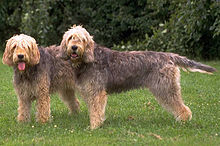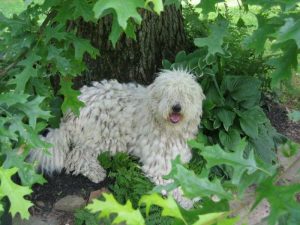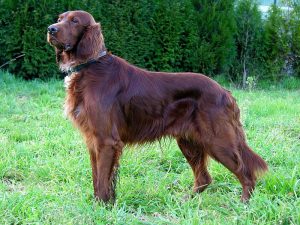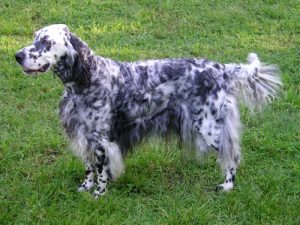Otterhound

Rescues Afghan Hound Basenji Basset Hound Beagle Black and Tan Coonhound Bloodhound Borzoi Dachshund Foxhound, American Foxhound, English Greyhound Harrier Ibizan Hound Irish Wolfhound Norwegian Elkhound Otterhound Petit Basset Griffon Vendeen Pharaoh Hound Plott Hound Bluetick Coonhound Redbone Coonhound Rhodesian Ridgeback Saluki Scottish Deerhound Sloughi Treeing Walker Coonhound Whippet American English Coonhound Cirneco dell'Etna Portuguese Podengo Pequeno
Boston MA 02108 United States
No phone number listedNo phone number listed

Rescues Afghan Hound Basenji Basset Hound Beagle Black and Tan Coonhound Bloodhound Borzoi Dachshund Foxhound, American Foxhound, English Greyhound Harrier Ibizan Hound Irish Wolfhound Norwegian Elkhound Otterhound Petit Basset Griffon Vendeen Pharaoh Hound Plott Hound Bluetick Coonhound Redbone Coonhound Rhodesian Ridgeback Saluki Scottish Deerhound Sloughi Treeing Walker Coonhound Whippet American English Coonhound Cirneco dell'Etna Portuguese Podengo Pequeno
Farmington MI 48336 United States

Rescues Afghan Hound Basenji Basset Hound Beagle Black and Tan Coonhound Bloodhound Borzoi Dachshund Foxhound, American Foxhound, English Greyhound Harrier Ibizan Hound Irish Wolfhound Norwegian Elkhound Otterhound Petit Basset Griffon Vendeen Pharaoh Hound Plott Hound Bluetick Coonhound Redbone Coonhound Rhodesian Ridgeback Saluki Scottish Deerhound Sloughi Treeing Walker Coonhound Whippet American English Coonhound Cirneco dell'Etna Portuguese Podengo Pequeno
Gulfport MS 39501 United States
No phone number listedNo phone number listed
We are unique in that we are a pro hunting rescue. I am a big advocate of hunting companions bein...

Rescues Afghan Hound Basenji Basset Hound Beagle Black and Tan Coonhound Bloodhound Borzoi Dachshund Foxhound, American Foxhound, English Greyhound Harrier Ibizan Hound Irish Wolfhound Norwegian Elkhound Otterhound Petit Basset Griffon Vendeen Pharaoh Hound Plott Hound Bluetick Coonhound Redbone Coonhound Rhodesian Ridgeback Saluki Scottish Deerhound Sloughi Treeing Walker Coonhound Whippet American English Coonhound Cirneco dell'Etna Portuguese Podengo Pequeno
Albany NY 12202 United States

Afghan Hound -Dogs American English Coonhound Basenji Basset Hound Beagle Black and Tan Coonhound Bloodhound Cirneco dell'Etna Dachshund Foxhound, American Foxhound, English Greyhound Irish Wolfhound Otterhound Portuguese Podengo Pequeno Rescues Rhodesian Ridgeback Scottish Deerhound
New York NY 10017 United States
Rebound Hounds believes there’s a great home for every dog

Rescues Afghan Hound Basenji Basset Hound Beagle Black and Tan Coonhound Bloodhound Borzoi Dachshund Foxhound, American Foxhound, English Greyhound Harrier Ibizan Hound Irish Wolfhound Norwegian Elkhound Otterhound Petit Basset Griffon Vendeen Pharaoh Hound Plott Hound Bluetick Coonhound Redbone Coonhound Rhodesian Ridgeback Saluki Scottish Deerhound Sloughi Treeing Walker Coonhound Whippet American English Coonhound Cirneco dell'Etna Portuguese Podengo Pequeno
503 13th St. New York NY 10017 United States
Rebound Hounds believes there’s a great home for every dog

Rescues Afghan Hound Basenji Basset Hound Beagle Black and Tan Coonhound Bloodhound Borzoi Dachshund Foxhound, American Foxhound, English Greyhound Harrier Ibizan Hound Irish Wolfhound Norwegian Elkhound Otterhound Petit Basset Griffon Vendeen Pharaoh Hound Plott Hound Bluetick Coonhound Redbone Coonhound Rhodesian Ridgeback Saluki Scottish Deerhound Sloughi Treeing Walker Coonhound Whippet American English Coonhound Cirneco dell'Etna Portuguese Podengo Pequeno
215 High St. Fairport Harbor OH 44077 United States
Hound Dog Rescue Corporation (HDRC) provides for the rescue, rehabilitation, and re-homing, of un...

Rescues Afghan Hound Basenji Basset Hound Beagle Black and Tan Coonhound Bloodhound Borzoi Dachshund Foxhound, American Foxhound, English Greyhound Harrier Ibizan Hound Irish Wolfhound Norwegian Elkhound Otterhound Petit Basset Griffon Vendeen Pharaoh Hound Plott Hound Bluetick Coonhound Redbone Coonhound Rhodesian Ridgeback Saluki Scottish Deerhound Sloughi Treeing Walker Coonhound Whippet American English Coonhound Cirneco dell'Etna Portuguese Podengo Pequeno
Findlay OH 45840 United States
We are a 501(c)(3) Non-Profit Rescue and Sanctuary for homeless Dogs located near Findlay, Ohio. ...

Rescues Afghan Hound Basenji Basset Hound Beagle Black and Tan Coonhound Bloodhound Borzoi Dachshund Foxhound, American Foxhound, English Greyhound Harrier Ibizan Hound Irish Wolfhound Norwegian Elkhound Otterhound Petit Basset Griffon Vendeen Pharaoh Hound Plott Hound Bluetick Coonhound Redbone Coonhound Rhodesian Ridgeback Saluki Scottish Deerhound Sloughi Treeing Walker Coonhound Whippet American English Coonhound Cirneco dell'Etna Portuguese Podengo Pequeno
Lone Pine Rd. Washington PA 15301 United States
Next to Pit Bulls, hound dogs are the hardest to place. The population of these dogs is profound ...

Rescues -Dogs Afghan Hound Basenji Basset Hound Beagle Black and Tan Coonhound Bloodhound Borzoi Dachshund Foxhound, American Foxhound, English Greyhound Harrier Ibizan Hound Irish Wolfhound Norwegian Elkhound Otterhound Petit Basset Griffon Vendeen Pharaoh Hound Plott Hound Bluetick Coonhound Redbone Coonhound Rhodesian Ridgeback Saluki Scottish Deerhound Sloughi Whippet American English Coonhound Cirneco dell'Etna Portuguese Podengo Pequeno
Simpsonville SC 29681 United States
We adopt to various areas within SC
Find Your Perfect Otterhound Rescue Through

Breed Group : HOUND
Origin : England
Average Height : 24" - 27"
Average Weight : 70 - 80 lbs.
Life Span : 10 - 12 years
Photo Courtesy of : Otterhound Club of America Rescue
Size
1 2 3 4 5 6 7 8 9 10Energy
1 2 3 4 5 6 7 8 9 10Intelligence
1 2 3 4 5 6 7 8 9 10Ease of Training
1 2 3 4 5 6 7 8 9 10Hypo-Allergenic
1 2 3 4 5 6 7 8 9 10Shedding
1 2 3 4 5 6 7 8 9 10Good with Kids
1 2 3 4 5 6 7 8 9 10Good with Other Pets
1 2 3 4 5 6 7 8 9 10Guard Dog
1 2 3 4 5 6 7 8 9 10
Otterhound Rescue Organizations

Rescues Afghan Hound Basenji Basset Hound Beagle Black and Tan Coonhound Bloodhound Borzoi Dachshund Foxhound, American Foxhound, English Greyhound Harrier Ibizan Hound Irish Wolfhound Norwegian Elkhound Otterhound Petit Basset Griffon Vendeen Pharaoh Hound Plott Hound Bluetick Coonhound Redbone Coonhound Rhodesian Ridgeback Saluki Scottish Deerhound Sloughi Treeing Walker Coonhound Whippet American English Coonhound Cirneco dell'Etna Portuguese Podengo Pequeno
Boston MA 02108 United States
No phone number listedNo phone number listed

Rescues Afghan Hound Basenji Basset Hound Beagle Black and Tan Coonhound Bloodhound Borzoi Dachshund Foxhound, American Foxhound, English Greyhound Harrier Ibizan Hound Irish Wolfhound Norwegian Elkhound Otterhound Petit Basset Griffon Vendeen Pharaoh Hound Plott Hound Bluetick Coonhound Redbone Coonhound Rhodesian Ridgeback Saluki Scottish Deerhound Sloughi Treeing Walker Coonhound Whippet American English Coonhound Cirneco dell'Etna Portuguese Podengo Pequeno
Farmington MI 48336 United States

Rescues Afghan Hound Basenji Basset Hound Beagle Black and Tan Coonhound Bloodhound Borzoi Dachshund Foxhound, American Foxhound, English Greyhound Harrier Ibizan Hound Irish Wolfhound Norwegian Elkhound Otterhound Petit Basset Griffon Vendeen Pharaoh Hound Plott Hound Bluetick Coonhound Redbone Coonhound Rhodesian Ridgeback Saluki Scottish Deerhound Sloughi Treeing Walker Coonhound Whippet American English Coonhound Cirneco dell'Etna Portuguese Podengo Pequeno
Gulfport MS 39501 United States
No phone number listedNo phone number listed
We are unique in that we are a pro hunting rescue. I am a big advocate of hunting companions bein...

Rescues Afghan Hound Basenji Basset Hound Beagle Black and Tan Coonhound Bloodhound Borzoi Dachshund Foxhound, American Foxhound, English Greyhound Harrier Ibizan Hound Irish Wolfhound Norwegian Elkhound Otterhound Petit Basset Griffon Vendeen Pharaoh Hound Plott Hound Bluetick Coonhound Redbone Coonhound Rhodesian Ridgeback Saluki Scottish Deerhound Sloughi Treeing Walker Coonhound Whippet American English Coonhound Cirneco dell'Etna Portuguese Podengo Pequeno
Albany NY 12202 United States

Afghan Hound -Dogs American English Coonhound Basenji Basset Hound Beagle Black and Tan Coonhound Bloodhound Cirneco dell'Etna Dachshund Foxhound, American Foxhound, English Greyhound Irish Wolfhound Otterhound Portuguese Podengo Pequeno Rescues Rhodesian Ridgeback Scottish Deerhound
New York NY 10017 United States
Rebound Hounds believes there’s a great home for every dog

Rescues Afghan Hound Basenji Basset Hound Beagle Black and Tan Coonhound Bloodhound Borzoi Dachshund Foxhound, American Foxhound, English Greyhound Harrier Ibizan Hound Irish Wolfhound Norwegian Elkhound Otterhound Petit Basset Griffon Vendeen Pharaoh Hound Plott Hound Bluetick Coonhound Redbone Coonhound Rhodesian Ridgeback Saluki Scottish Deerhound Sloughi Treeing Walker Coonhound Whippet American English Coonhound Cirneco dell'Etna Portuguese Podengo Pequeno
503 13th St. New York NY 10017 United States
Rebound Hounds believes there’s a great home for every dog

Rescues Afghan Hound Basenji Basset Hound Beagle Black and Tan Coonhound Bloodhound Borzoi Dachshund Foxhound, American Foxhound, English Greyhound Harrier Ibizan Hound Irish Wolfhound Norwegian Elkhound Otterhound Petit Basset Griffon Vendeen Pharaoh Hound Plott Hound Bluetick Coonhound Redbone Coonhound Rhodesian Ridgeback Saluki Scottish Deerhound Sloughi Treeing Walker Coonhound Whippet American English Coonhound Cirneco dell'Etna Portuguese Podengo Pequeno
215 High St. Fairport Harbor OH 44077 United States
Hound Dog Rescue Corporation (HDRC) provides for the rescue, rehabilitation, and re-homing, of un...

Rescues Afghan Hound Basenji Basset Hound Beagle Black and Tan Coonhound Bloodhound Borzoi Dachshund Foxhound, American Foxhound, English Greyhound Harrier Ibizan Hound Irish Wolfhound Norwegian Elkhound Otterhound Petit Basset Griffon Vendeen Pharaoh Hound Plott Hound Bluetick Coonhound Redbone Coonhound Rhodesian Ridgeback Saluki Scottish Deerhound Sloughi Treeing Walker Coonhound Whippet American English Coonhound Cirneco dell'Etna Portuguese Podengo Pequeno
Findlay OH 45840 United States
We are a 501(c)(3) Non-Profit Rescue and Sanctuary for homeless Dogs located near Findlay, Ohio. ...

Rescues Afghan Hound Basenji Basset Hound Beagle Black and Tan Coonhound Bloodhound Borzoi Dachshund Foxhound, American Foxhound, English Greyhound Harrier Ibizan Hound Irish Wolfhound Norwegian Elkhound Otterhound Petit Basset Griffon Vendeen Pharaoh Hound Plott Hound Bluetick Coonhound Redbone Coonhound Rhodesian Ridgeback Saluki Scottish Deerhound Sloughi Treeing Walker Coonhound Whippet American English Coonhound Cirneco dell'Etna Portuguese Podengo Pequeno
Lone Pine Rd. Washington PA 15301 United States
Next to Pit Bulls, hound dogs are the hardest to place. The population of these dogs is profound ...

Rescues -Dogs Afghan Hound Basenji Basset Hound Beagle Black and Tan Coonhound Bloodhound Borzoi Dachshund Foxhound, American Foxhound, English Greyhound Harrier Ibizan Hound Irish Wolfhound Norwegian Elkhound Otterhound Petit Basset Griffon Vendeen Pharaoh Hound Plott Hound Bluetick Coonhound Redbone Coonhound Rhodesian Ridgeback Saluki Scottish Deerhound Sloughi Whippet American English Coonhound Cirneco dell'Etna Portuguese Podengo Pequeno
Simpsonville SC 29681 United States
We adopt to various areas within SC
-
The first recorded Otterhounds known to resemble the current breed are in the North-West of England in the first half of the 19th century - for example, the Hawkstone Otter Hunt and Squire Lomax's Otterhounds.
In the second half of the 19th century, French Griffons were outcrossed, including one-eighth Wolf cross/Griffon Vendeen from the Comte de Canteleu in Normandy. In the early 20th century the Griffon Nivernais was crossed into the breed, and one particular dog, Boatman, a Grand Griffon Vendeen/Bloodhound cross became an ancestor for several kennels.
It is one of the ancestral breeds of the Airedale Terrier.
Otter hunting dates back to the early medieval period, with references it is found as early as 1360. The Otterhound, however, can only be traced back as a distinct breed as far as the early 1800s.
The otter is one of the largest and most intelligent carnivorous mammals in Europe.
To be equal to the otter, an Otterhound was said to need "a Bulldog's courage, a Newfoundland's strength in water, a Pointer's nose, a Retriever's sagacity, the stamina of a Foxhound, the patience of a Beagle, and the intelligence of a Collie.
In 1978, due to the dramatic decline in otter numbers, the otter was placed on the list of protected species in the UK and otterhunting therefore ceased.
By 1977, nine registered packs of otterhounds were still in existence. A few hunts switched to hunting mink or coypu, but many of the original otterhound packs hunts ceased to exist altogether. Hounds were often passed to newly founded minkhound packs.
The Pembroke and Carmarthenshire Minkhounds are the only pack today with a pure otterhound pack.
As the dogs had been selectively bred for their hunting capabilities, only a few of the bloodlines were suitable for breeding into companion animals.
There are an estimated 1000 Otterhounds in the world. It is considered to be the most endangered native breed in Britain, with only 15 new registrations in 2011. This is partially because Otterhounds have never been numerous, and even in the early 20th century, when otter hunting was at the height of its popularity as a sport, the number of dogs was still small.
They are on the list of Vulnerable Native Breeds as identified by the UK Kennel Club, and great efforts are being made to save the breed. -
Temperament
The Otterhound is a bold and exuberant dog, and is naturally cheerful and consistently excited. It makes a wonderful companion and does well with family members and young children. It is not recommended for households with young children, however, since they can become fairly intense and clumsy at times. These dogs are naturally friendly with other family pets and strangers, and will come across as very affectionate.
The Otterhound is an intelligent dog, and can become very eager to please. It does take patience to train this dog because it has a tendency to become overly willful; however, it is also pleasant and submissive, and will respond well to firm and consistent training. The approach of using an 'iron fist with a velvet glove' is most appropriate for the type of training that is best for this dog. These dogs are naturally quiet, patient, and respond well to positive feedback. They do have a tendency to follow their noses and sniff new people and places often. Their bark is powerful and decisive, and will carry far. They are naturally outdoor dogs, but will not bark excessively if they are at home and around their owners and other animals.
The Otterhound has a deep bay an even melodious sound; it may sound like it is muttering, but often grunts, groans, and sighs when relaxed. These dogs are natural 'singers' and will happily bark and play when around people. When they are in a large pack of Otterhounds, they are especially pleasurable to listen to. These dogs make good watch dogs as their noise is distinct and easily picked up; however, they are poor guard dogs as they do not necessarily train well for 'attack' work.
Health Problems
These dogs are generally quite healthy and function well in a variety of environments. They are most healthy when they receive plenty of Exercise, but there are some special conditions to be aware of:
Hip Dysplasia: Canine hip dysplasia (CHD) can cause mild to severe lameness
Grooming
The Otterhound's coat is naturally weather-resistant, and needs to be combed and brushed at least once per week. This prevents matting and keeping the hair clean, soft, and well-maintained will ensure that the dog stays healthy. The beard will need to be washed at least 2-3 times per week, as this area can accumulate dirt and dust far more quickly. The coat can be kept natural, and will have a light glossy sheen in optimal condition. The Otterhound is an average shedder, thus growing a healthy and vibrant coat each season. Still, they do not shed a great deal.
The Otterhound's naturally webbed feet are large and hairy, and have a tendency to attract mud and dirt. It is important to brush their feet clean after they have been outdoors for a long period of time. These dogs are naturally slobbery, and since their beards are kept long and hairy, water and food can become stuck near the face. Brushing and cleaning the dog's face on a regular basis will help them stay healthy and clear of infections.
The undercoat of the Otterhound can become oily, and they may develop a strong odor as a result. It is important to give this dog frequent baths if it showing in competition, but a standard cleaning at a professional groomer can also be helpful at least once per month. Cleaning the ears is important, especially when the dog has been in the water for extended periods of time.
Exercise
The Otterhound requires a considerable amount of exercise to stay happy and healthy. These dogs train easily when they are active and socialized, and enjoy long walks, jogging, and playing in parks. They do have a tendency to follow a scent and may disobey their owners as a result. It is important to remember this when letting them go unleashed, as they have a tendency to roam and explore on their own.
An ideal exercise for the Otterhound is simply swimming in a lake or pond; these dogs thoroughly enjoy swimming for extended periods of time, and will adapt well to an environment where this is encouraged. These dogs do not require a large yard, but do need plenty of running space and an opportunity to visit a park will be well received! The Otterhound has a high level of steady energy, and they rarely race or attack. Instead, these dogs enjoy consistency in their travels and surroundings, and adapt well to a variety of settings.
Hiking, exploring, and climbing are also wonderful actvitieis for th eOtterhound. Since these are naturally outdoor dogs, they will enjoy visiting new places and territory. Making sure they are on a leash during these adventures is advisable. A game of fetch and other dog toys can help entertain them during other times, and these are important during "rainy days" when the dog is expected to stay indoors. Naturally energetic and with a strong stamina, these dogs will fare well with athletic owners! The Otterhound is the perfect jogging companion.
Training
The Otterhound has a naturally positive personality with a strong and noble appearance. They try very hard to be good, and are joyful by nature. Although they look dignified and very noble, they are often misconceived as they have an almost "childish" playfulness and attitude. It is helpful to know this in training as they respond well to play and this can be incorporated in their training program. Still, these dogs are independent by nature, and it can be difficult to train them if they are trained after their puppy and formative years.
Training can take some patience as these dogs tend to be very stubborn. However, by combining play and training will be most effective in encouraging change. These dogs grow in size very rapidly, and it is best to train them at the youngest age possible. These dogs may become too "soft" if they are not trained appropriately, and thus need some harsh correction on occasion. They are natural retrievers, and will learn quickly when they are happy and in a playful environment. As a result, taking them outside for games such as Frisbee or fetching a ball can be helpful in "breaking the ice" and encouraging them to respond to your requests.
Highly intelligent and naturally bright, it's important to remember that these dogs have a strong sense of smell. They will go to great lengths to locate food, so it is important to train them on how and where they should be exploring and foraging. They have been known to open refrigerator doors and even yard fences on their searches for food, and it is important that they are trained to respect areas of the household. Encouraging positive habits through mindful training is most effective in overcoming their tendency to search areas without restraint.
Otterhounds can be successfully trained to become obedient and submissive to their owners. They excel as tracking dogs, and are wonderful "therapy" dogs with their sweet and friendly natures. They do their best when they are mostly active, and have a good-natured personality with children and other dogs. Still, it is important to outline and emphasize boundaries for these dogs as early as possible. These dogs respond well to encouragement, attention, and affection. They can learn new tricks fairly easily, and will adopt new skills in a very short period of time. These dogs do not make good guard dogs, but can be wonderful watchdogs if the owners need a dog that simply oversees the home. Since they do require plenty of exercise, helping them stay active will result in a happy and attentive dog as well.
Overall, it is important for owners and masters to have a sense of humor with these dogs. These dogs tend to be messy and can become destructive if they are bored or ignored. The dog needs to learn and grow in its early years, and will respond well to affection and attention. They will also adopt to different environments relatively easily and become quite protective of their territory.







